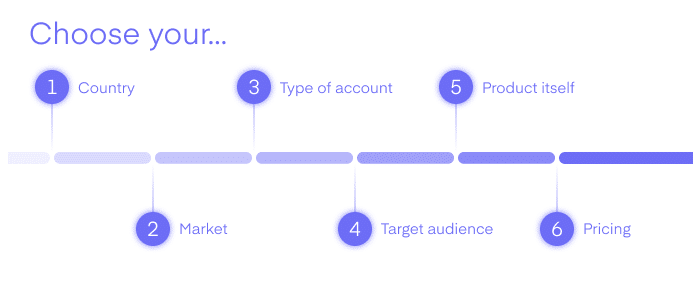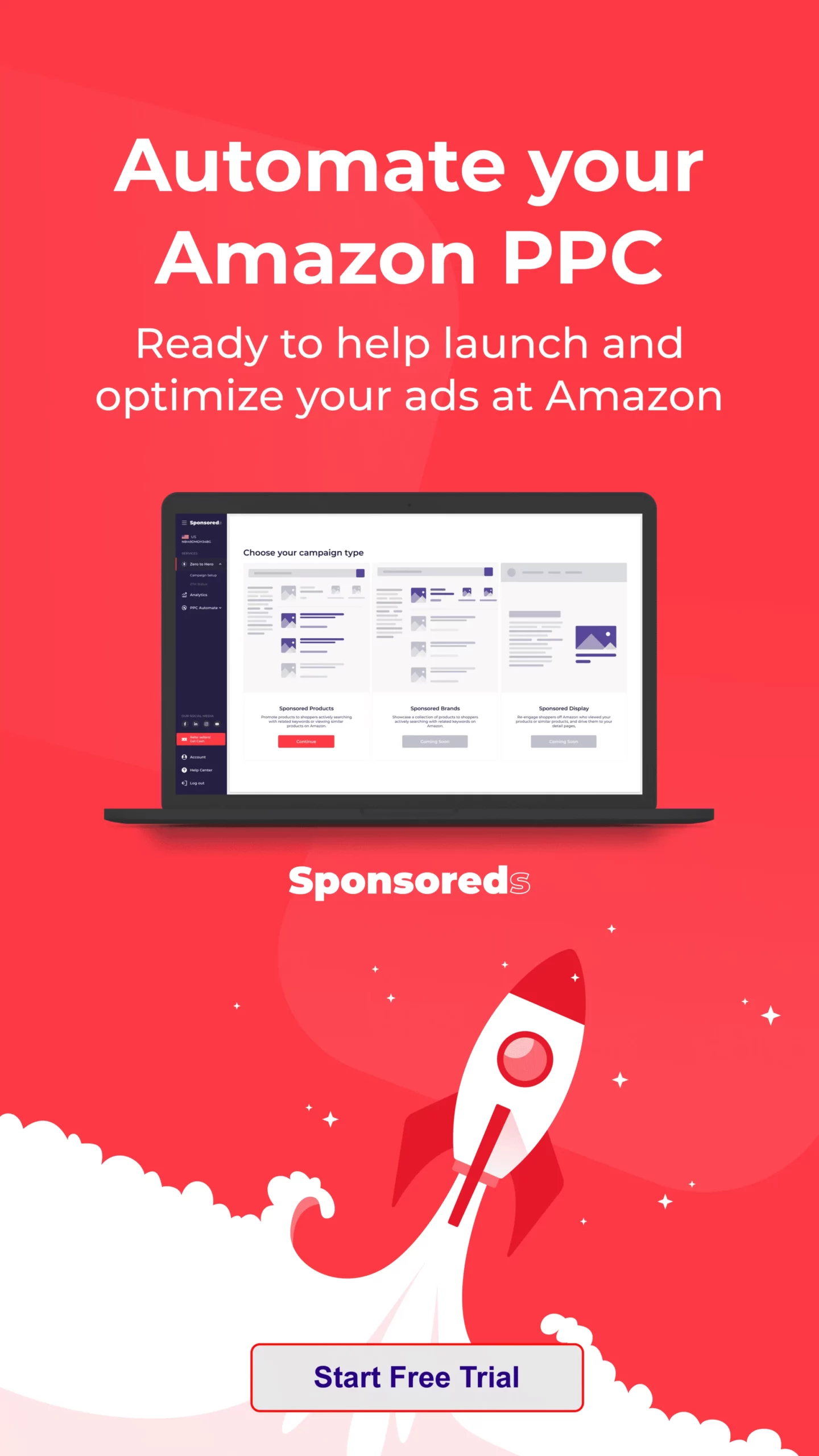For any seller aiming to succeed on Amazon, ensuring your Amazon account is advertising-ready is crucial. Achieving this involves more than just setting up a few ads; it requires a holistic approach that includes strategic planning, operational efficiency, high-quality content creation, and effective traffic management. Each element plays a vital role in maximizing the effectiveness of your advertising efforts. In this article, we will guide you through the process of preparing your account to meet these demands, covering every aspect from strategy to execution. By following these steps, you can optimize your Amazon account to drive successful advertising campaigns and achieve long-term growth.
The Right Strategy
The foundation of any successful advertising campaign is a well-crafted strategy. Your advertising efforts need to be closely aligned with your overall business goals to ensure consistency and effectiveness. A well-thought-out strategy utilizes thorough market research to understand the competitive landscape and customer behavior. This approach supports informed decision-making and involves careful budget planning and tracking key performance indicators (KPIs). Integrating these elements prepares your account to drive meaningful and measurable results.
Aligning with Business Goals
Your advertising strategy must reflect your brand’s broader vision. It’s not just about increasing sales—it’s about contributing to your business’s long-term success. For example, if your goal is to increase market share in a specific category, your strategy should focus on promoting relevant products through targeted promotions or aggressive sponsored product campaigns. Setting clear, measurable objectives, such as boosting sales or enhancing brand visibility, is crucial for guiding your advertising efforts and making sure your Amazon account is advertising-ready.
Key points for aligning with business goals:
- Prioritize Products: Focus on products that align with your business objectives.
- Set Clear Objectives: Define measurable goals to track your advertising success.
- Allocate Resources Wisely: Ensure that your advertising budget supports your key business goals.
Market Research and Budgeting
Understanding the competitive landscape is crucial in identifying growth opportunities. Conducting thorough market research helps you grasp competitor strategies, market trends, and consumer behavior. This research shapes your advertising strategy, ensuring your account can capitalize on identified opportunities. Proper budgeting ensures you allocate resources effectively, avoiding overspending while still achieving your goals.
Steps to effective market research and budgeting:
- Competitor Analysis: Identify the strengths and weaknesses of your competitors.
- Trend Analysis: Spot emerging trends to stay ahead of the market.
- Budget Allocation: Distribute your budget across campaigns to maximize ROI.
Tracking KPIs
Tracking key performance indicators (KPIs) is vital for measuring the success of your advertising campaigns. Common KPIs include conversion rates, cost per click (CPC), and return on ad spend (ROAS). Regularly reviewing these metrics ensures your account can adapt to changing market conditions and consumer behaviors, allowing you to optimize campaigns for better performance.
Important KPIs to monitor:
- Conversion Rates: Measure how effectively your ads turn clicks into sales.
- Cost Per Click (CPC): Keep track of how much you’re spending per ad click.
- Return on Ad Spend (ROAS): Calculate the revenue generated for every dollar spent.
The Right Operations
Operational efficiency is essential for making sure your Amazon account is advertising-ready. This starts with correctly setting up your account and ensuring that all the necessary details and configurations are in place. Compliance with Amazon’s policies is equally important, as it helps avoid potential issues that could disrupt your advertising efforts. Effective inventory and fulfillment management are also crucial, ensuring that your products are always available and delivered on time. Focusing on these operational aspects creates a strong foundation for successful advertising campaigns.
Account Setup and Compliance
Completing the Amazon account verification process is the first step to ensure your account is ready for advertising. This process involves submitting necessary business documents to Amazon, such as your business license, tax identification number, and bank account details. Completing this process properly is crucial to avoid any delays or issues with your account. After verification, make sure all necessary Amazon ad permissions are granted, allowing you to manage ad campaigns and access advanced features effectively.
Steps to ensure proper account setup and compliance:
- Complete Verification: Submit all required documents to Amazon for account validation.
- Set Permissions: Ensure all necessary Amazon ad permissions are in place.
- Regular Compliance Checks: Review Amazon’s policies to ensure ongoing compliance.
Inventory and Fulfillment Management
Proper inventory and fulfillment management are essential for maintaining product availability and avoiding stockouts, which can negatively impact your advertising efforts. Using tools like Amazon Seller Central, you can efficiently manage inventory, set up alerts for low stock, and ensure timely order fulfillment. Streamlining fulfillment processes, whether through Fulfillment by Amazon (FBA) or self-fulfillment (FBM), enhances customer satisfaction and improves your seller rating, boosting product visibility.
Key strategies for inventory and fulfillment management:
- Monitor Stock Levels: Use Amazon’s tools to keep track of inventory and avoid stockouts.
- Streamline Fulfillment: Optimize order processing for timely and accurate deliveries.
- Improve Customer Satisfaction: Efficient fulfillment leads to better reviews and higher ranking
The Right Content
High-quality content is the backbone of your product listings, crucial in attracting customers and driving conversions. Well-optimized listings, engaging visuals, and strategic use of A+ Content are vital components of a successful advertising campaign.
Optimizing Listings and Visuals
Optimizing your product listings is key to maximizing visibility and conversion rates. This includes crafting compelling product titles, bullet points, and descriptions that highlight your product’s unique selling points. High-quality images and videos are equally important, as they significantly influence purchasing decisions. By ensuring your listings and visuals are top-notch, you ensure your account is prepared for driving successful ad campaigns.
Essential elements of content optimization:
- Product Titles: Create clear, keyword-rich titles to improve search visibility.
- Descriptions and Bullet Points: Highlight key features and benefits of your products.
- High-Quality Visuals: Use professional images and videos to showcase your products effectively.
Utilizing A+ Content and Managing Reviews
A+ Content allows you to create rich, visually appealing product descriptions that can significantly increase conversion rates. Managing customer reviews and feedback is also crucial for maintaining a positive brand reputation. Regularly monitoring reviews and responding promptly to any negative feedback through Amazon ads chat support demonstrates your commitment to customer satisfaction and helps build trust with potential buyers.
Key tactics for A+ Content and review management:
- A+ Content: Use enhanced product descriptions, comparison charts, and rich images to convey product value.
- Review Monitoring: Regularly check customer reviews and address any issues quickly.
- Feedback Encouragement: Encourage satisfied customers to leave positive reviews.
The Right Traffic
Driving the right traffic to your Amazon listings is essential for a successful advertising strategy. This involves selecting the appropriate advertising options, targeting the correct audience, and leveraging external traffic sources to maximize the impact of your campaigns.
Advertising Options and Targeting
Selecting the right advertising options, such as sponsored products, Sponsored Brands, and Sponsored Display ads, is crucial for achieving specific goals like increasing brand awareness or driving sales. Effective targeting ensures your ads reach the right audience through automatic or manual targeting options.
Tips for selecting ad options and targeting:
- Choose the Right Ad Types: Match your campaign goals with the appropriate ad format.
- Automatic vs. Manual Targeting: Use automatic targeting for broad reach and manual targeting for precision.
- Refine Audience Segments: Analyze audience behavior to improve targeting accuracy.
External Traffic and Performance Analysis
Leveraging external traffic sources, such as social media and influencer partnerships, can help increase your product’s visibility and drive more sales. Regularly analyzing traffic performance metrics, such as click-through rates (CTR) and return on ad spend (ROAS), allows you to refine your strategy and optimize your campaigns for better results. By staying proactive in your approach, you can avoid issues like Amazon ads payment failure and ensure that your Amazon account is advertising-ready.
Steps for managing external traffic and performance analysis:
- Utilize Social Media: Drive external traffic with targeted ads and influencer partnerships.
- Monitor Performance Metrics: Track CTR, ROAS, and other key metrics to assess campaign success.
- Adjust Strategies as Needed: Use performance data to refine your approach and improve results.
Final Thoughts
Ensuring your Amazon account is advertising-ready is an ongoing process that requires careful attention to strategy, operations, content, and traffic management. Following these steps can drive successful advertising campaigns that contribute to your business growth. Always ensure your Amazon ads payment method is correctly set up to avoid disruptions and keep your strategy updated to adapt to changing trends and market conditions. For more insights and expert assistance, visit Profit Whales or reach out to us through our Contact Us page.
FAQ
What are some common mistakes sellers make when setting up their Amazon account?
Common mistakes include not fully completing the Amazon account verification process, neglecting compliance with Amazon’s policies, and failing to set up Amazon ads payment methods correctly. These oversights can lead to delays, account suspensions, or missed advertising opportunities.
How can I improve my product’s visibility on Amazon?
To improve your product’s visibility, optimize your product listings with relevant keywords, enhance your product images, and utilize Amazon’s advertising options like sponsored products. Additionally, leveraging external traffic sources such as social media and influencer partnerships can further boost your visibility.
What are the best practices for managing customer feedback on Amazon?
Best practices include actively monitoring reviews, responding promptly to negative feedback, and encouraging satisfied customers to leave positive reviews. Utilizing tools like Amazon ads chat support can also help manage feedback effectively and maintain a positive brand image.
How often should I review and update my Amazon advertising strategy?
Your advertising strategy should be reviewed and updated regularly, ideally on a monthly basis, to ensure it adapts to market changes, seasonal trends, and new Amazon features. Regular reviews help you stay competitive and continuously optimize your campaigns for better performance.
What information is required to create an advertising console account?
To create an advertising console account, you must provide detailed business information, including your company’s legal name, address, and payment information. Ensuring that your Amazon ads payment method is correctly set up is crucial to avoid any Amazon ads payment failure issues and ensure the smooth operation of your ad campaigns.








